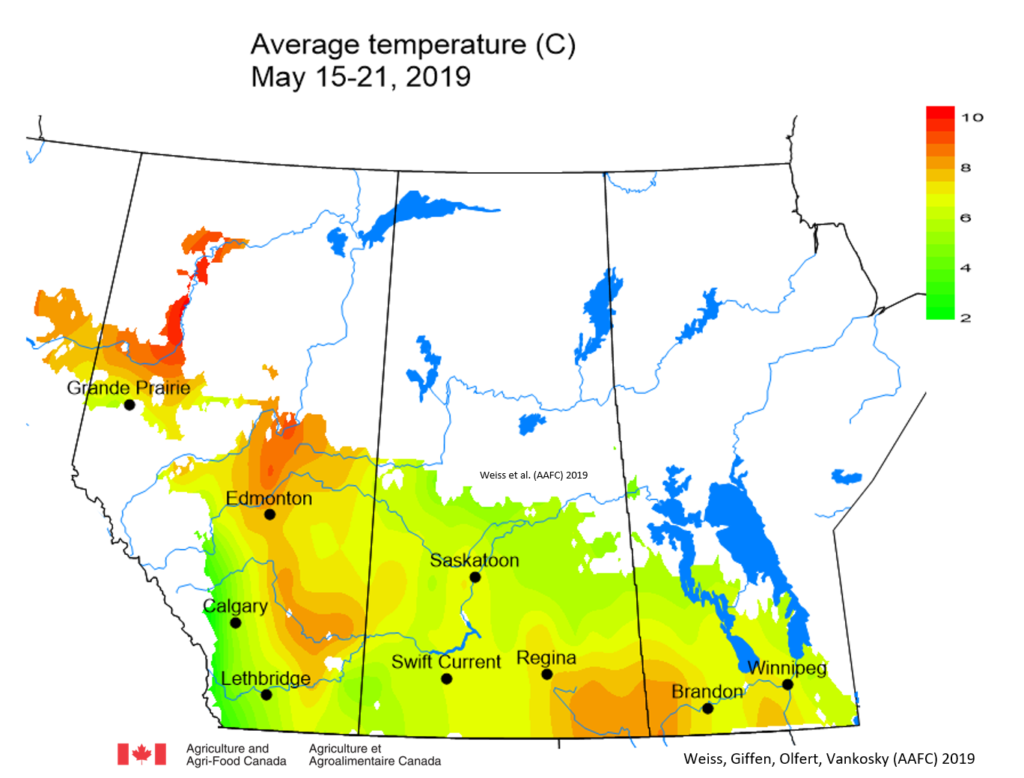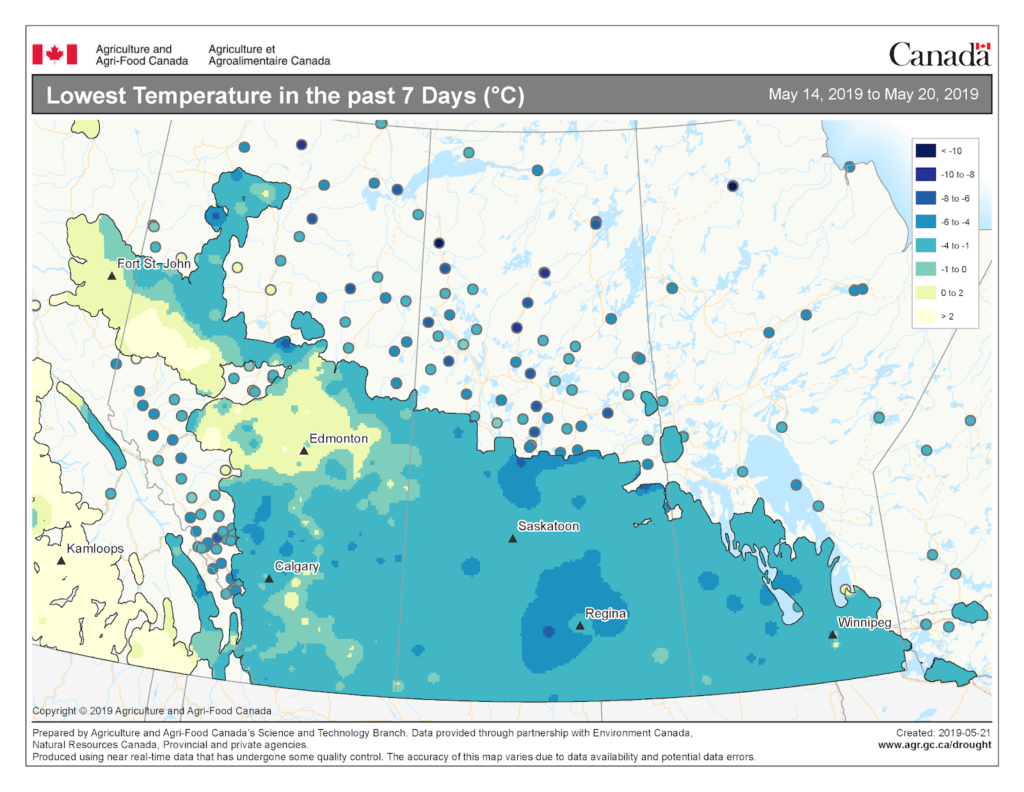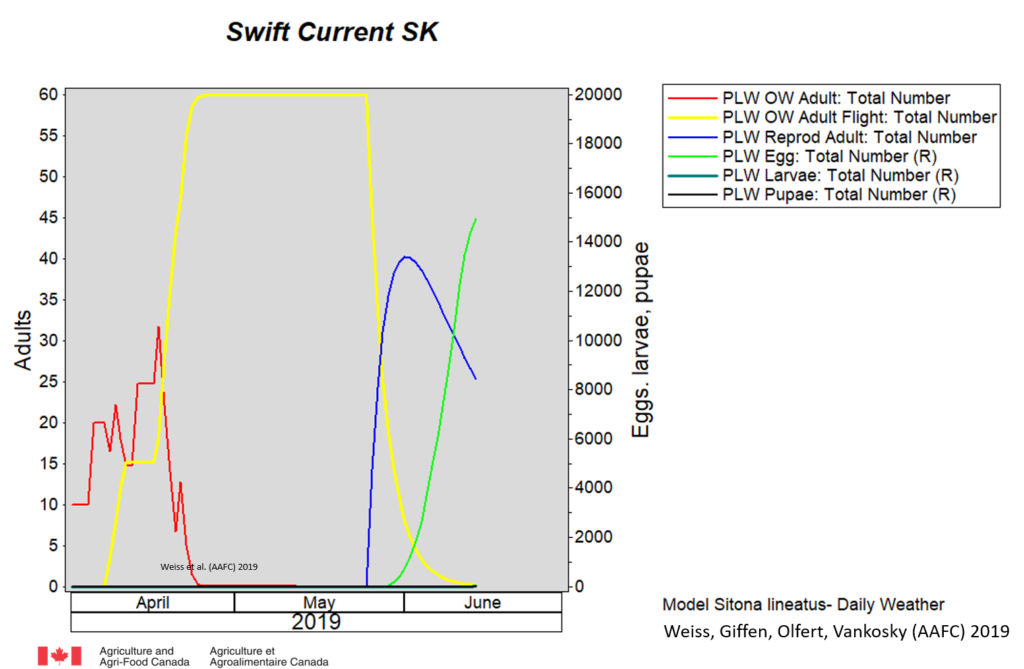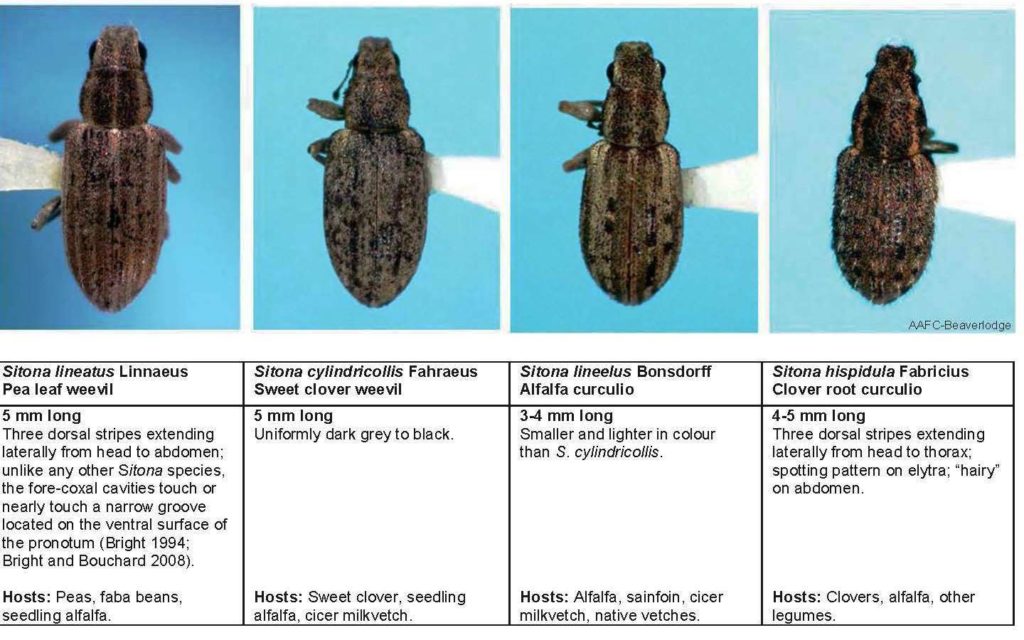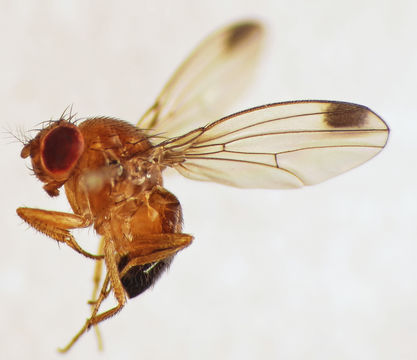Public summer field events – Coming to a field near you – Our field crop entomologists are already scheduled to be at these 2019 field tour events from May-August (be sure to re-confirm dates and details as events are finalized):
• June 6, 2019. Farming Smarter crop walk or plot hop if you are a flea beetle! Access event information. Entomologist participating: Hector Carcamo
• June 20, 2019: Solstice Forage and Crops Field Tour to be held at the Beaverlodge Research Farm (Beaverlodge AB). View event info/registration details. Entomologists tentatively participating: Jennifer Otani, Keith Uloth
• June 26, 2019: 2019 CanolaPALOOZA to be held at the Lacombe Research and Development Centre (Lacombe AB). View event info/registration details. Entomologists tentatively participating: Jennifer Otani, Amanda Jorgensen, Meghan Vankosky, Scott Meers, Shelley Barkley, Patty Reid, Sunil Shivananjappa, Hector Carcamo, Julie Soroka, Mark Cutts, Jim Tansey, Sherrie Benson and the Junior Entomologists.
• July 9-12, July 16-18, 2019: Crop Diagnostic School. Held at the University of Manitoba Research Farm at Carman, Manitoba. An 2-week diagnostic school will complete units on entomology, plant pathology, weed science, soil fertility, pulse crop production, and oilseed production. View registration and event information. Entomologists participating: John Gavloski and Jordan Bannerman.
• July 9, 2019: CanolaPALOOZA Saskatoon, to be held at the SRDC Llewellyn Farm. Read more about this event. Entomologists presenting: Tyler Wist, James Tansey, Greg Sekulic, Meghan Vankosky
• July 23-24, 2019: Crop Diagnostic School, Scott Saskatchewan. Read more about this event. Entomologists presenting: Meghan Vankosky, Tyler Wist.
• July 24, 2019: Crops-a-Palooza. Held at Canada-Manitoba Crop Diversification Centre (CMCDC), Carberry, Manitoba. Read more about this event. Entomologist participating: John Gavloski, Vincent Hervet, Tharshi Nagalingam, Bryan Cassone.
• August 8, 2019: 2019 Wheatstalk to be held at Teepee Creek AB. View event info/registration details. Entomologists tentatively participating: Jennifer Otani, Amanda Jorgensen.
• August 8, 2019. Horticulture School. Agriculture and Agri-Food Canada Research Farm, Portage la Prairie, Manitoba. Entomologist presenting: John Gavloski, Kyle Bobiwash.


